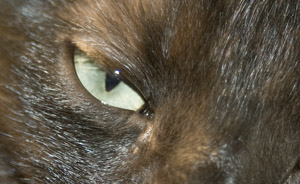What is a photo essay. this is simply an essay; a term conventionally used to describe a short piece of writing which is quite often written from an author's personal point of view. when used in photography is fairly the same however instead of words there are photos. the photo essay in itself being a set or series of photographs that are intended to tell a story or evoke a series of emotions in the viewer.
A photo essay will often consist of pictures which show deep emotional stages in the story being told. Photo essays can range from purely photographic works to photographs with captions or small notes. or sometimes even full text essays with a few or many accompanying photographs,which in my opinion destroys the whole object of a photo essay. Photo essays can be sequenced, intended to be viewed in a particular order, or they may consist of non-ordered photographs which may be viewed all at once or in an order chosen by the viewer.
When creating a photo essay the camera shots must be taken into account.
-Establishing shot
 This shot is very wide. These types of shots tell us where the story will take place, and will most likely establish context, setting and often mood.
This shot is very wide. These types of shots tell us where the story will take place, and will most likely establish context, setting and often mood.-Medium shot
 These type of photos get a little bit closer to the action. usually explaining the story is about and who or what the characters are.
These type of photos get a little bit closer to the action. usually explaining the story is about and who or what the characters are. -Detail shot
-Portrait shot
 This is usually a head shot, captured in portrait framing. it is often an environmental portrait.
This is usually a head shot, captured in portrait framing. it is often an environmental portrait.-Moment shot
 Otherwise known as the "wow" shot. This photo captures an exchange, a gesture, sometimes even a decisive moment .
Otherwise known as the "wow" shot. This photo captures an exchange, a gesture, sometimes even a decisive moment . -Closer shot
 This shot rounds everything up, it can sometimes provides some resolution, or just provides a natural place to end the story in many photo essays. However not in all.
This shot rounds everything up, it can sometimes provides some resolution, or just provides a natural place to end the story in many photo essays. However not in all.More detailed camera shots and angles:
 Camera shots mainly include the "establishing shot"; which is usually and extreme long shot, which allows the viewer to establish the scene, in which the story will take place. a building height equivalent can usually be fitted in the frame.
Camera shots mainly include the "establishing shot"; which is usually and extreme long shot, which allows the viewer to establish the scene, in which the story will take place. a building height equivalent can usually be fitted in the frame. the "long shot" which introduces a character, this can also be used as an establishing shot on some occasions. in the long shot a character height equivalent usually fits the frame.
the mid shot, is a shot from the waist up which brings the viewer into the conversation or action. the mid shot can varies in name such as two shot or three shot, which is the corresponding amount of characters in the frame viewed from the waist up.
The "medium close up", is a shot from the shoulder area which allows the viewer to get personal with the character, however, not two personal, this then escalates to a "close up".
This usually fits only the characters head in the frame. this shot is used to convey deep emotion, whether it be anger or sorrow. the close up can then escalate to an "extreme close up" which fits one of the characters eyes in the frame, both eyes in some cases. this shot is very effective and creates much more sympathy for the character.
This usually fits only the characters head in the frame. this shot is used to convey deep emotion, whether it be anger or sorrow. the close up can then escalate to an "extreme close up" which fits one of the characters eyes in the frame, both eyes in some cases. this shot is very effective and creates much more sympathy for the character.
Camera angles include those such as the "birds eye view", this shows a scene from directly overhead, objects viewed from this angle might seem totally unrecognizable at first. This shot does, however, put the audience in a godlike position, looking down on the action.
 The "high angle shot" is a shot taken from a high angle, with similar effects to the birds eye view shot, however the shot isn't take directly above and so characters can be recognized, however the viewer is still dominant. in some ways it can be used to portray isolation, making the viewer sympathetic to the character in the frame.
The "high angle shot" is a shot taken from a high angle, with similar effects to the birds eye view shot, however the shot isn't take directly above and so characters can be recognized, however the viewer is still dominant. in some ways it can be used to portray isolation, making the viewer sympathetic to the character in the frame.The "low angle shot" is fairly the opposite of the high angle, and is taken from a below the character, causing the character to seem taller, and creates dominance in the character, and renders intimidation in the viewer.
The "eye level shot" is a neutral shot where the aim is purely for the character to be viewed by the audience.


No comments:
Post a Comment